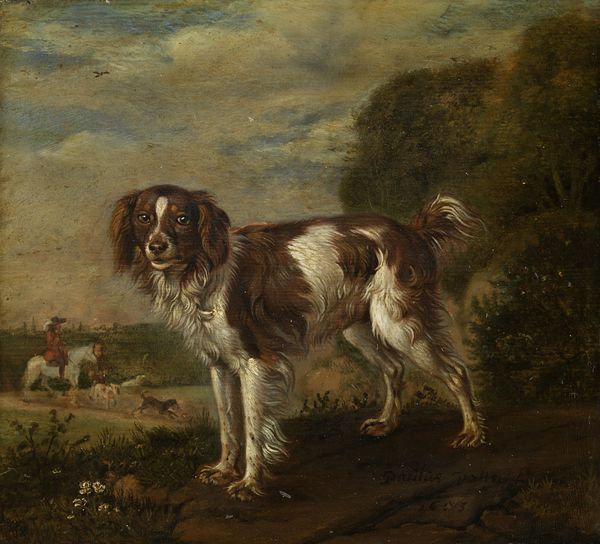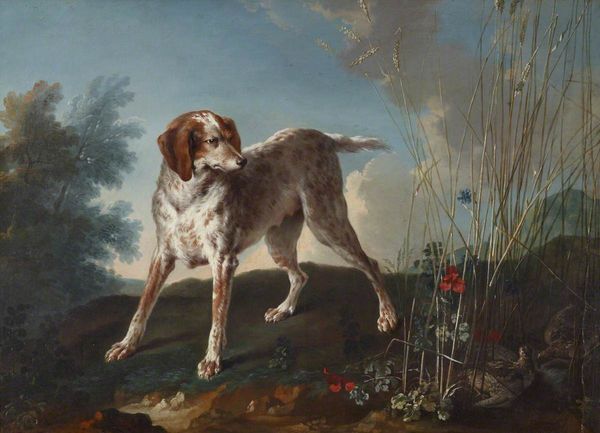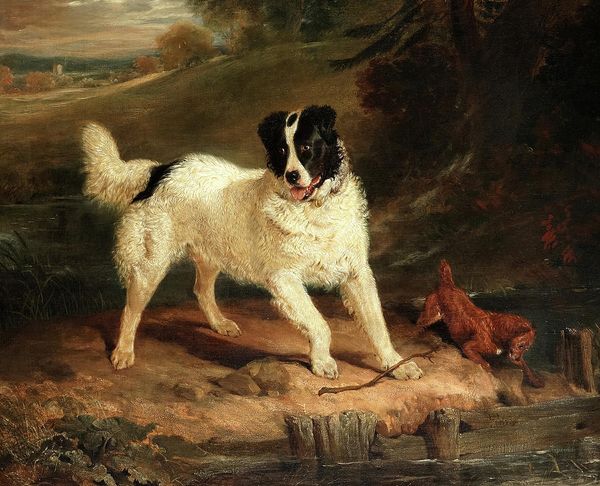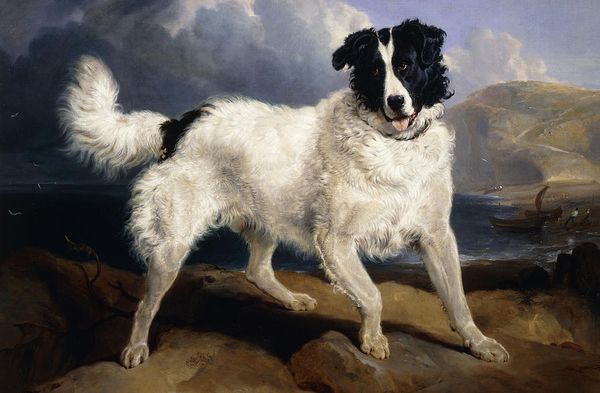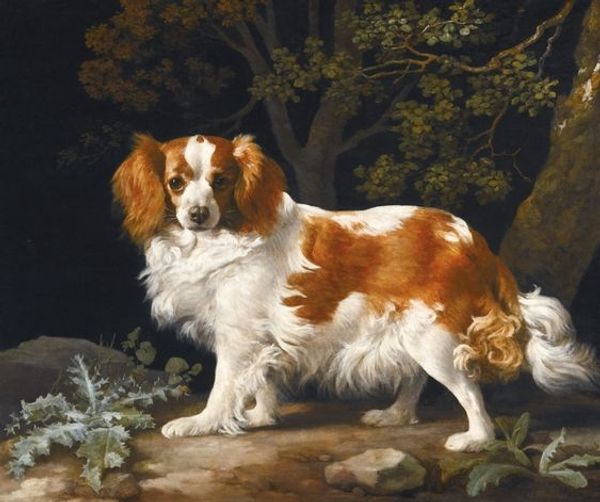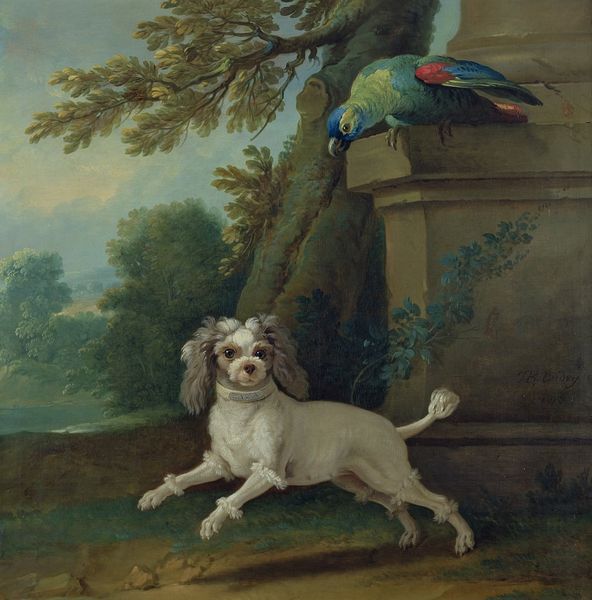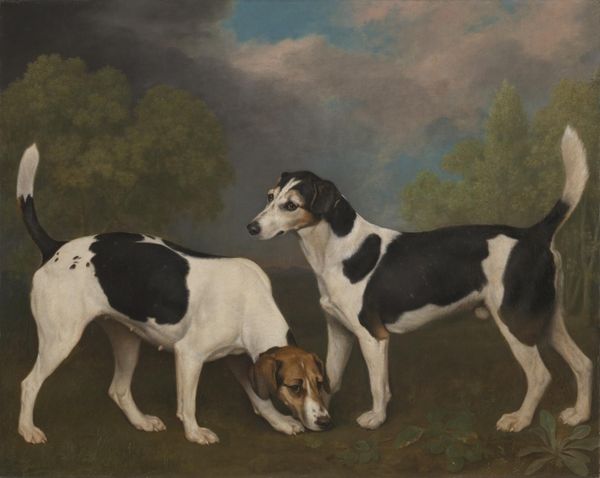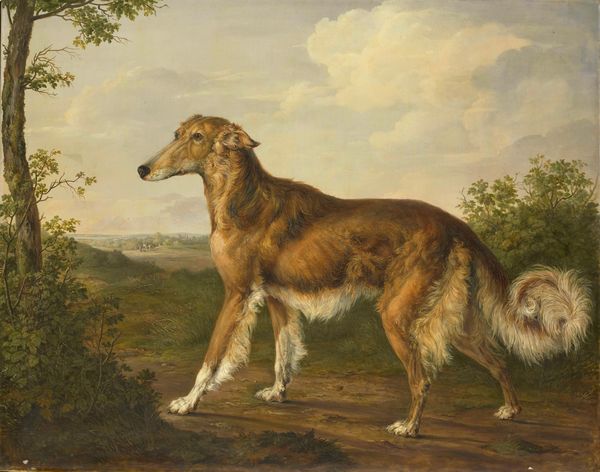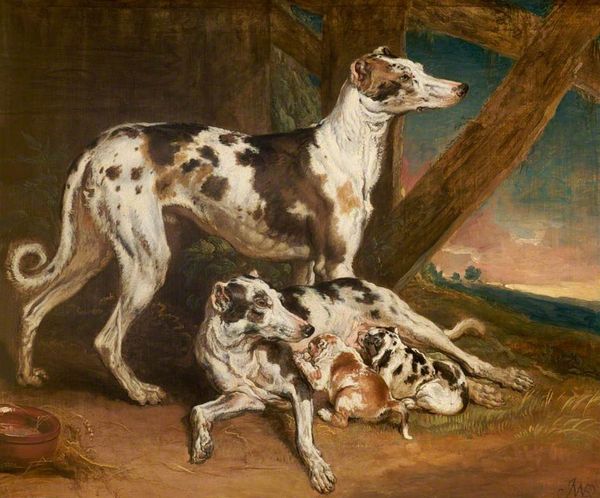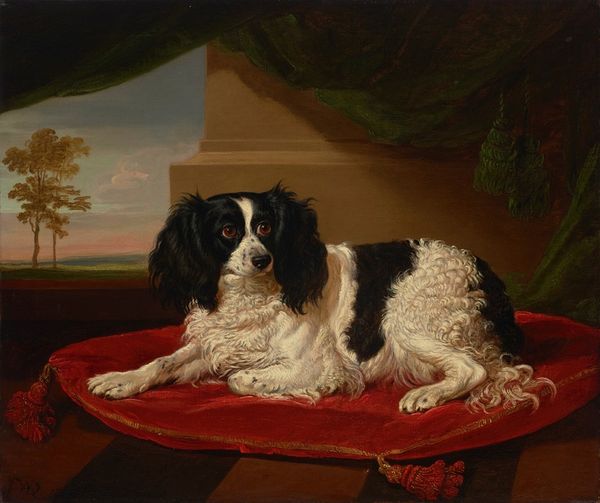
Portrait of Dash, a Favourite Spaniel, the Property of Lady Frances Vane-Tempest 1819
0:00
0:00
painting, oil-paint
#
portrait
#
animal
#
painting
#
oil-paint
#
landscape
#
figuration
#
oil painting
#
romanticism
Copyright: Public Domain: Artvee
Editor: Here we have James Ward's oil on canvas from 1819, "Portrait of Dash, a Favourite Spaniel, the Property of Lady Frances Vane-Tempest." The sheer size of the dog, and the portrait-like setting...it feels almost comical in its grandeur! What’s your take on this? Curator: It’s easy to laugh, but this painting actually reveals quite a bit about British society at the time. Consider the role of portraiture historically – it was traditionally reserved for the aristocracy to demonstrate power and status. Ward is placing this dog within that visual tradition. Editor: So, the artist is using visual language to suggest the dog occupies a similar social standing as a noble? Curator: Precisely. Think about the political instability in Europe at this time, the rise of new money and industry. Paintings like this reinforced a sense of order. Dog ownership, particularly specific breeds, became closely associated with landed gentry. The painting actively legitimizes aristocratic pastimes and signifiers of power during an era of intense change. The public exhibition of such works at institutions such as the Royal Academy helped shape taste and cement social hierarchies. Editor: I hadn’t thought about it in terms of reinforcing class structures. Curator: Consider who had the power to commission and consume art. These portraits helped normalize certain ideas about wealth and status in the public imagination. What might this imply about today’s cultural trends surrounding “pets?” Editor: Food for thought, definitely. I'll never look at a dog portrait the same way again. Curator: It highlights how art can be a powerful tool in understanding socio-political forces, even in seemingly lighthearted subjects.
Comments
No comments
Be the first to comment and join the conversation on the ultimate creative platform.
